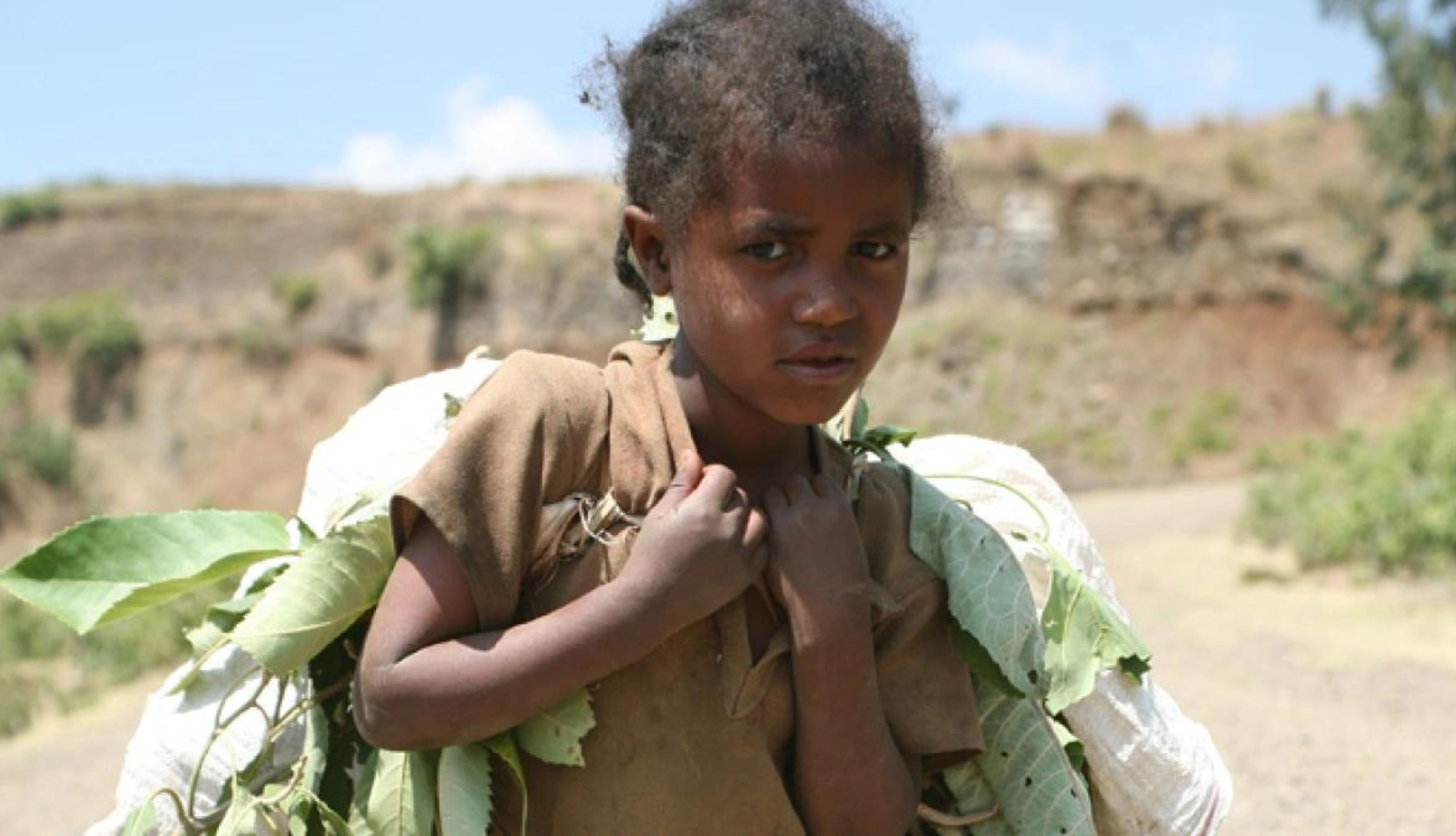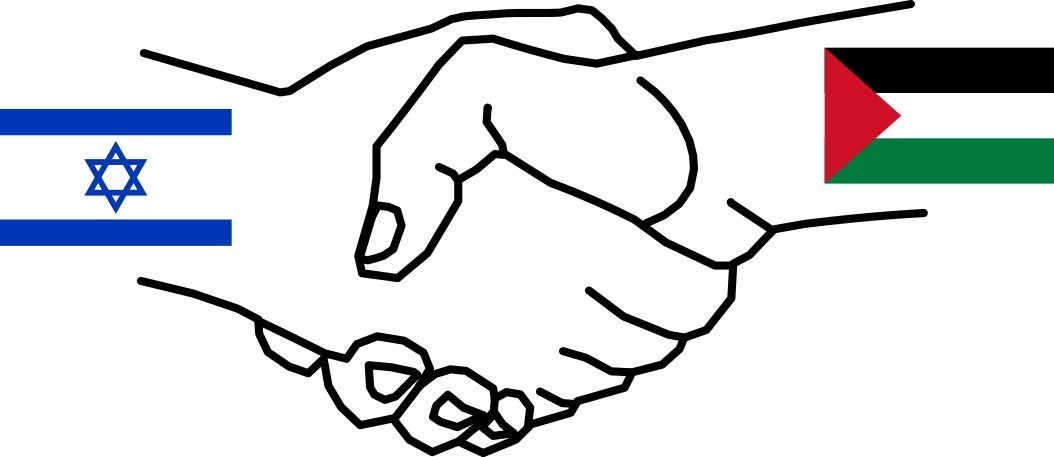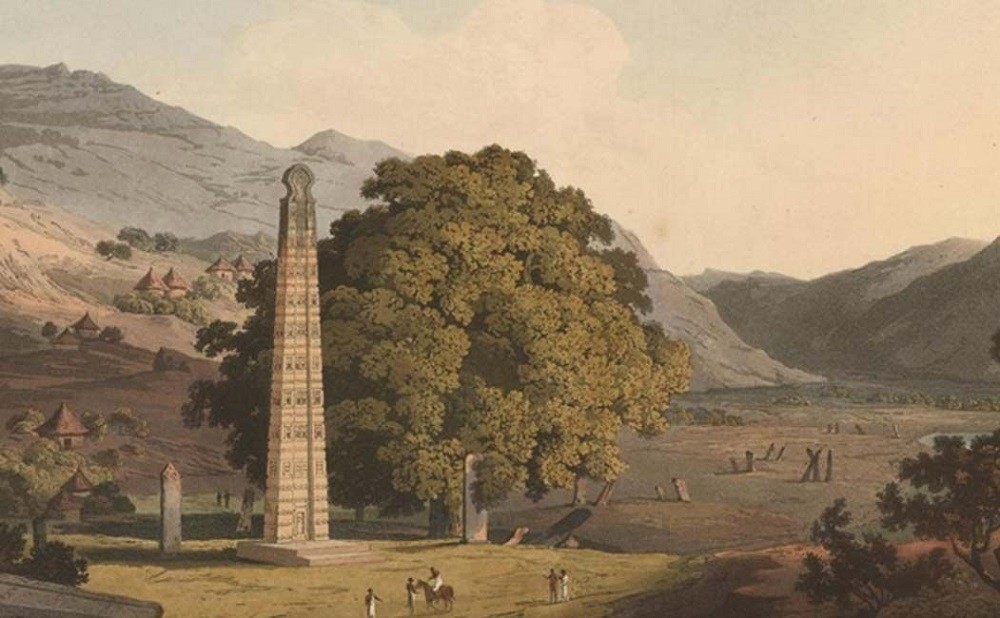The Aksumite Empire or Axumite Empire (sometimes called the Kingdom of Aksum or Axum), extended across most of present-day Eritrea, northern Ethiopia, western Yemen, southern Saudi Arabia, and Sudan. The capital city of the empire, Aksum, now in northern Ethiopia, was an important trading nation in northeastern Africa. Aksumite Empire was a major trading nation, whose economy was almost entirely dependent on export and international trade. Growing from the proto-Aksumite Iron Age period around the fourth century (before common era, BCE) to achieve prominence by the first century (common era, CE), it is considered as the alleged resting place of the Ark of the Covenant and the home of the Queen of Sheba.
READ ALSO: The Mystical Ancient Land of Punt


The Upswing
Aksum arose from a series of influential ethnic and cultural groups. Major influences include the Sabaean people from Southern Arabia, the local Da’amot people, and the declining Kingdom of Kush in modern-day Sudan.
Before the Aksumite Empire became the most powerful economic force in the Horn of Africa, the city of Meroë in Kush was the economic center of the region, at least until the Aksumite Empire invaded Kush in 330 CE (this is sometimes put around 350 CE). The invasion was one of many factors that led to the decline of the Kingdom of Kush, of which Meroë was its’ last metropolis after the decline of Kerma and Napata. Although Aksum was already flourishing before the conquest of Kush, it did not reach its peak until the decline of Meroë.
Formally conquering Kush by 350, they became the political and economic power of the region. In fact, the Iranian prophet of the third century, Mani, named Aksum one of the four great powers of the time, along with Persia, Rome, and China.
Aksum interfered in the Arabian Peninsula and northern Africa, expanding its control to an area of almost a million square miles that included parts of modern Ethiopia, Sudan, Egypt, Yemen, and Saudi Arabia. Aksum adopted Christianity around 325 CE under the powerful King Ezana as well, connecting it culturally to a growing number of Christian kingdoms.
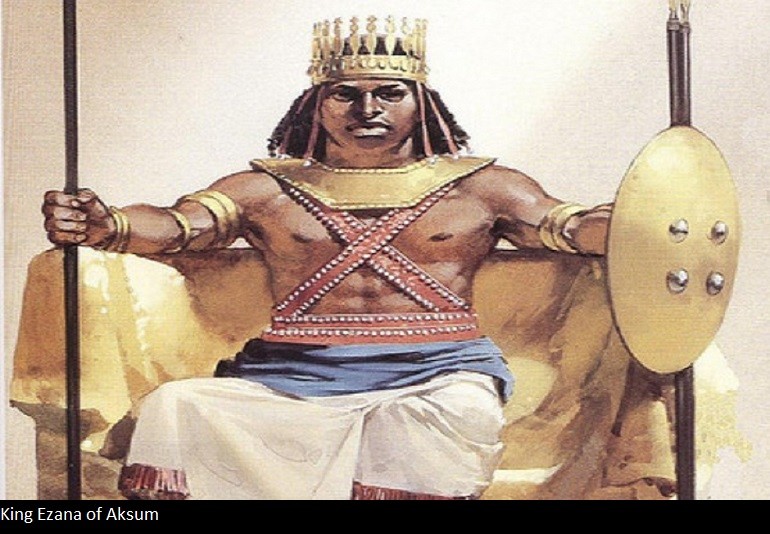

The majority of their wealth came from the rise of a new sailing technique that used seasonal winds to cross the Red and Arabian Seas, increasing the amount of trade that could pass through that region. Aksum was right at the intersection of trade routes between the Mediterranean and these seas and was able to dominate the market on international trade.
Economy and Foreign Trade
The power and importance of Aksum were paralleled by no other African civilization during the period of its existence besides Egypt. The Aksumite Empire pioneered remarkable innovations in commerce and its influence was so far-reaching that Aksum traded with India and Byzantium, exporting ivory, tortoise shell, gold, and emeralds, and importing silk and spices. Aksum’s access to both the Red Sea and the Upper Nile enabled its strong navy to profit in trade between various African (Nubia), Arabian (Yemen), and Indian states. Its strong navy protected the coastal trade routes and the trade networks along the Nile River and the Southern Red Sea, which were the source of its tremendous wealth. The main exports of Aksum were, as would be expected of a state during this time, agricultural products. The land was much more fertile during the time of the Aksumites than now, and their principle crops were grains such as wheat and barley. The people of Aksum also raised cattle, sheep, and camels. Wild animals were also hunted for things such as ivory and rhinoceros horns. They traded with Roman traders as well as with Egyptian and Persian merchants.


The empire was also rich with gold and iron deposits. These metals were valuable to trade, but another mineral was also widely traded. Salt was found richly in Aksum and was traded quite frequently.
Furthermore, Trade in Aksum was done using Aksum coinage as currency to exchange values for goods and services. It was the first African polity to issue its own coin. Aksum coins had a cross to reflect their Christian faith and demonstrate its central role in society. The Aksum controlled their own currency and minted their own currency which gave them protection over their own economic affairs. Aksum traders travelled to India and China exporting ivory, gold and emerald wheat, barley in exchange for silk and spices. This doctrine of unequal exchange eventually led to the collapse of the Aksum Empire.
The Aksum military did great exploits and were known throughout the world to use iron tools, spears and shields in battle. Their military strategy also included the use of animals such as elephants to literally crush their enemies and were victorious in many battles.
Culture and Religion
The Empire of Aksum is notable for a number of achievements, such its own alphabet, the Ge’ez alphabet (which evolved from Epigraphic South Arabian during the late pre-Aksumite and proto-Aksumite period), and was modified to include vowels, becoming an abugida. Also, the Obelisk/Stelae are perhaps the most identifiable part of the Aksumite legacy. These stone towers served to mark graves or represent a magnificent building. The largest of these towering obelisks would measure 33 meters high had it not fallen. The Stelae have most of their mass out of the ground, but are stabilized by massive underground counterweights. The stone was often engraved with a pattern or emblem denoting the king’s or the noble’s rank.


Furthermore, under Emperor Ezana, Aksum adopted Christianity in place of its former polytheistic and Judaic religions around 325. This gave rise to the present day Ethiopian Orthodox Tewahedo Church (1959), and Eritrean Orthodox Tewahdo Church (1993). Since the schism with orthodoxy following the Council of Chalcedon (451), it has been an important Miaphysite church, and its scriptures and liturgy are still in Ge’ez.
It was a cosmopolitan and culturally important state. It was a meeting place for a variety of cultures: Egyptian, Sudanic, Arabic, and Indian. The major Aksumite cities had Sabean, Jewish, Nubian, Christian, and even Buddhist minorities.
Aksum is said to be the apparent home of the Ark of the Covenant housed in the Church of Mary of Zion, guarded heavily by the priests there. The Ark was said to have been brought to Aksum by King Solomon and the Queen of Sheba’s son and placed under guard. Controversy surrounds the Church, since no one but the one guard priest is allowed in, no one can verify the Ark’s existence.
The Downswing
Historians are not certain what exactly led to the decline of the Kingdom of Aksum but several factors are thought to have been at play. In the seventh century, the new religion Islam began spreading extremely quickly across the Middle East and Africa. The new Islamic powers grew in power and size and constantly clashed against rival Christian kingdoms. Aksum, however, maintained good relations with their Islamic neighbors, since the city had safely harbored the early followers of the religion back in the year 615. Nevertheless, as the Islamic kingdoms grew in prominence they came to economically dominate the region, undermining the power of Aksum. As Islamic powers gained control of the most important ports, Aksum began a gradual decline near the end of the seventh century.
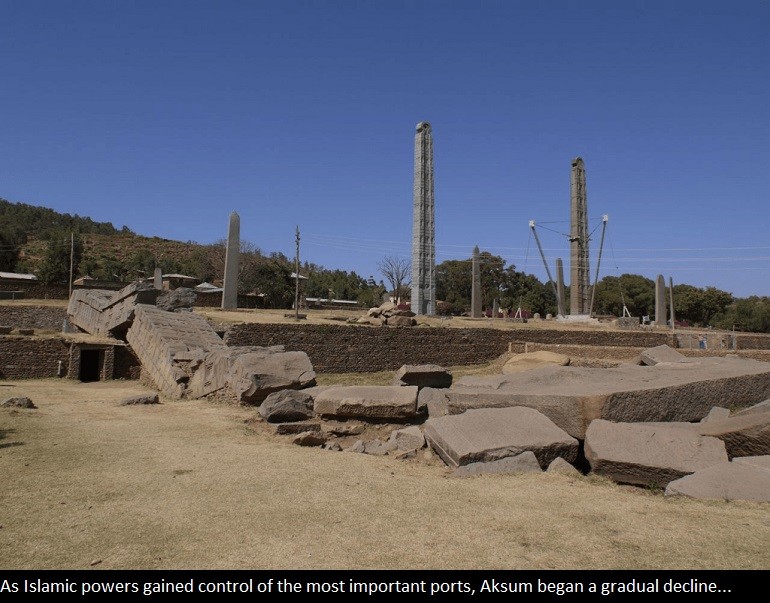

Also, from the late sixth century CE, due to overuse of agricultural land or the incursion of western Bedja herders who, forming themselves into small kingdoms, grabbed parts of Aksum territory for grazing their cattle and who persistently attacked Aksum’s camel caravans. In addition, the policy of Aksum’s kings to allow conquered tribal chiefs a good deal of autonomy often backfired and permitted some of them to have the means to launch rebellions.
Furthermore, historians agree that climate changes must have greatly contributed to the end of Aksum. As international profits from the exchange network declined, Aksum lost its ability to control its own raw material sources, and that network collapsed. The already persistent environmental pressure of a large population to maintain a high level of regional food production had to be intensified. The result was a wave of soil erosion that began on a local scale circa 650 and attained catastrophic proportions after 700. Presumably, complex socio-economic inputs compounded the problem. These are traditionally reflected in declining maintenance, deterioration and partial abandonment of marginal crop land, shifts to destructive pastoral exploitation, and eventual wholesale and irreversible land degradation. This syndrome was possibly accelerated by an apparent decline in rainfall reliability beginning in 730 to 760, which reduced the growing season significantly and was not corrected until well into the ninth century.
READ ALSO: The Battle of Blood River – The Voortrekkers and The Zulus
Despite its collapse, the city of Aksum is still inhabited to this day by approximately 50,000 people, making it the oldest continuously inhabited city on the continent.


